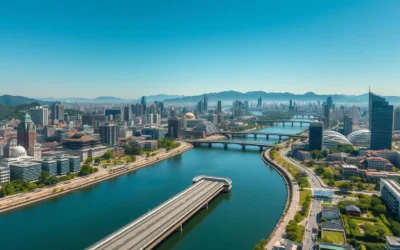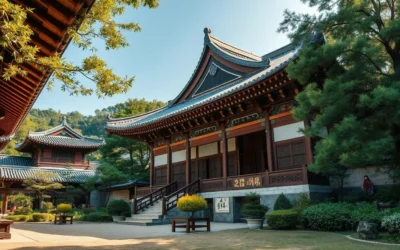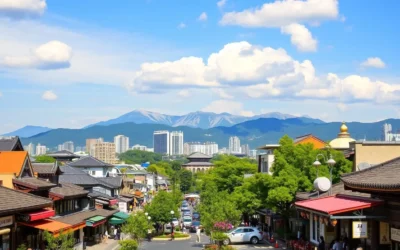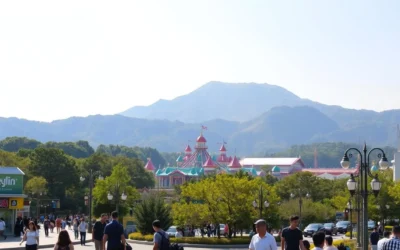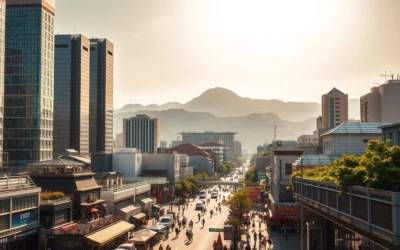✓ Accommodations✓ Flights✓ Rental Cars
You’re about to explore the fascinating world of languages in a specific region of South Korea. The country’s linguistic diversity is reflected in its various dialects, which are shaped by geographical and cultural factors.
The Korean language is unified as the official language, but regional dialects like the one spoken in a certain central region offer a unique glimpse into local culture and history.
This region’s dialect is part of a broader dialect family, characterized by distinct features that set it apart from standard Korean. By understanding the language patterns of this region, you’ll gain valuable insights into the local way of life.
The Linguistic Landscape of South Korea
The linguistic landscape of South Korea is a fascinating reflection of its history and cultural heritage. As you explore this topic, you’ll discover how the Korean language has evolved over time, influenced by various historical and cultural factors.
Korean as the Official Language
The Korean language is the official language of South Korea, with its standardized form, known as Pyojuneo, based on the Seoul dialect. This standardized form serves as the foundation for formal communication nationwide, ensuring clarity and consistency across different regions. You will find that the use of Pyojuneo is widespread in official contexts, education, and media.
- The Korean language has a unique writing system known as Hangul.
- Pyojuneo is used in formal situations and official communications.
The Development of Modern Korean
The development of modern Korean represents a fascinating linguistic journey spanning several centuries. The creation of the Hangul writing system in the 15th century by King Sejong the Great was a pivotal moment in this journey. 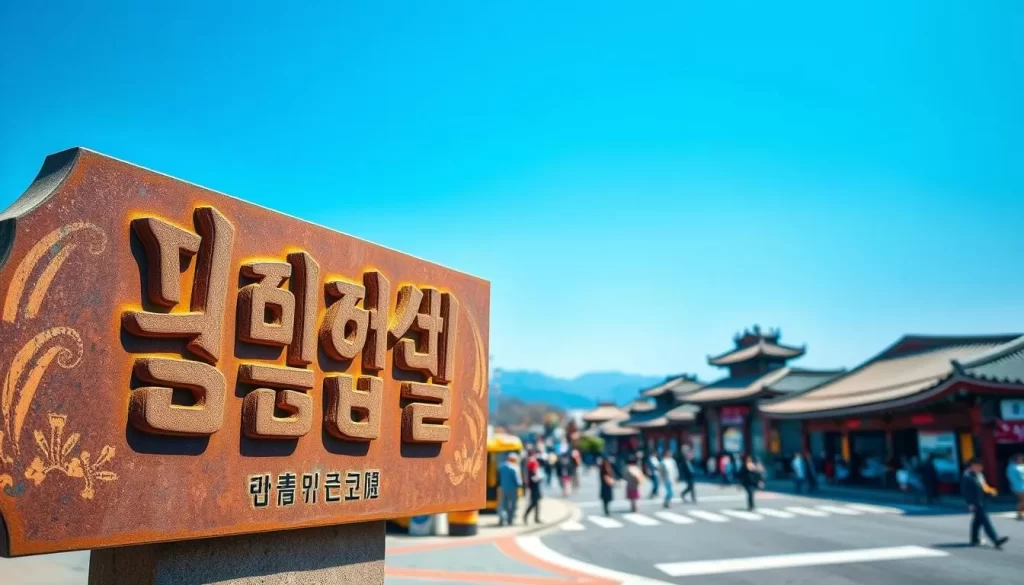 Before Hangul, Chinese characters were used, which couldn’t precisely represent the sounds of the Korean language. Understanding this historical context helps you appreciate the evolution of the Korean language.
Before Hangul, Chinese characters were used, which couldn’t precisely represent the sounds of the Korean language. Understanding this historical context helps you appreciate the evolution of the Korean language.
- The Hangul writing system was created in the 15th century.
- Modern Korean has been influenced by historical factors, including Chinese cultural influence and Japanese occupation.
North Chungcheong Province: A Regional Overview
Located in the heart of South Korea, North Chungcheong Province is a region of significant cultural and historical importance. As you delve into this province, you’ll uncover its unique characteristics that set it apart from other regions in the country.
Geographical Location and Significance
North Chungcheong Province is situated in the west-central part of South Korea, making it the only province without a coastline. This strategic location has influenced its development throughout South Korean history, serving as a crossroads between different regions and cultural influences. The province encompasses significant cities such as Cheongju, the provincial capital, and Jecheon, representing major regional hubs.
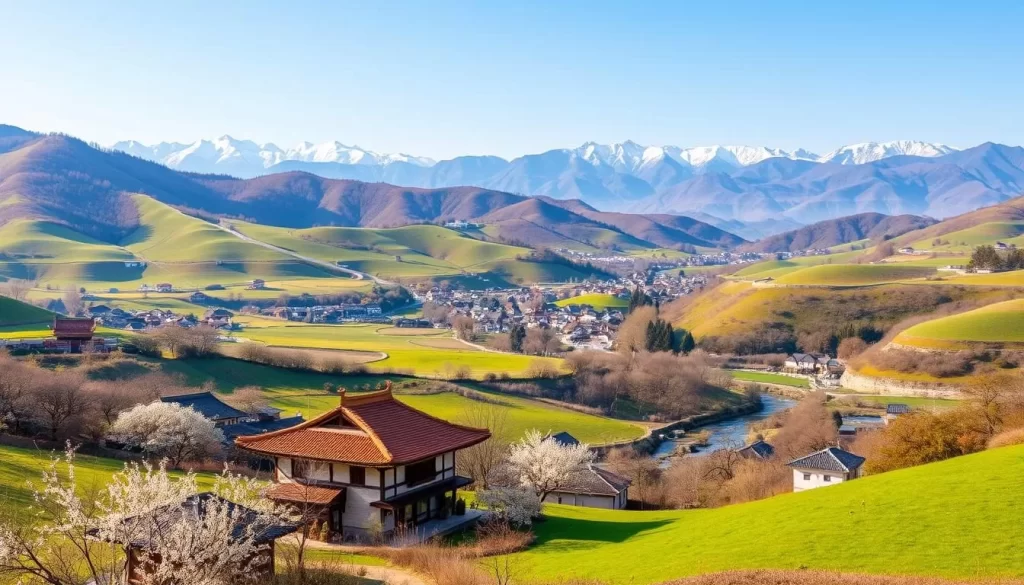
Cultural and Historical Background
The culture of North Chungcheong Province is deeply rooted in its history, with the people having developed a distinct regional identity. This identity is reflected in their dialect, customs, and cultural practices, which differ from standard Korean and other regional dialects. Understanding the province’s geographical and cultural context is essential for appreciating its linguistic patterns and the significance of its region within the country.
North Chungcheong Province, South Korea: Official and widely spoken languages
The linguistic diversity of North Chungcheong Province, South Korea, is marked by the presence of Standard Korean and the regional Chungcheong dialect. This blend of official and local languages creates a unique cultural identity for the region.
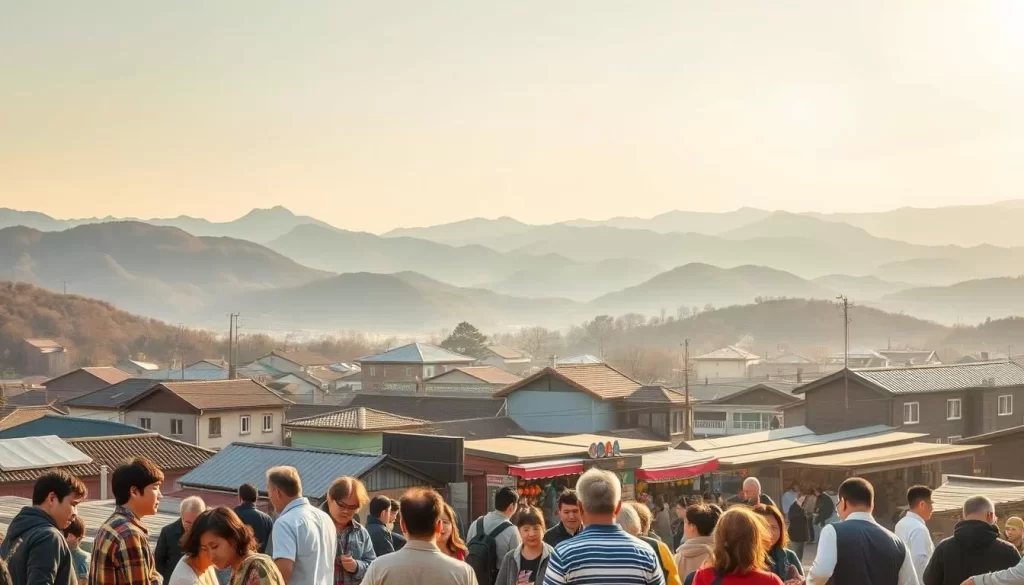
Standard Korean in North Chungcheong
Standard Korean (Pyojuneo) serves as the official language in North Chungcheong Province for education, government, and formal settings. This ensures that residents are proficient in the national language, facilitating communication across different regions of South Korea.
The use of Standard Korean is widespread in official contexts, providing a common linguistic framework for administrative and educational purposes.
The Prevalence of the Chungcheong Dialect
The Chungcheong dialect, spoken in the Chungcheongnamdo (South Chungcheong) and Chungcheongbukdo (North Chungcheong) provinces, is known for its slower tempo, giving it a relaxed, laid-back manner of speaking. While Standard Korean is used in formal situations, the dialect is widely spoken in everyday conversations among locals.
The dialect spoken in North Chungcheong shares many similarities with Standard Korean, making it more mutually intelligible than some other regional dialects in the country. Residents typically switch between standard language and dialect depending on the social context, demonstrating linguistic flexibility common in Korean society.
Understanding both the official language status and dialect usage in the province provides insight into the complex linguistic landscape of this region.
Distinctive Features of the Chungcheong Dialect
You will discover that the Chungcheong dialect has a unique charm, shaped by its pronunciation, vocabulary, and grammatical structures. This dialect is a vital part of the cultural identity of North Chungcheong Province, reflecting the region’s history and lifestyle.
Pronunciation Characteristics
The Chungcheong dialect is characterized by its distinct pronunciation features, including a leisurely pace and unique vowel shifts. For instance, during verb conjugation, vowels like ㅗ (o) change to ㅜ (oo), and ㅛ (yo) change to ㅠ (yu). An example is the standard verb ending -요 (yo) in “가요” (gayo, go) shifting to -유 (yu), resulting in “가유” (gayu). This relaxed pronunciation can sometimes be mistaken for hesitation but reflects the region’s cultural emphasis on politeness.
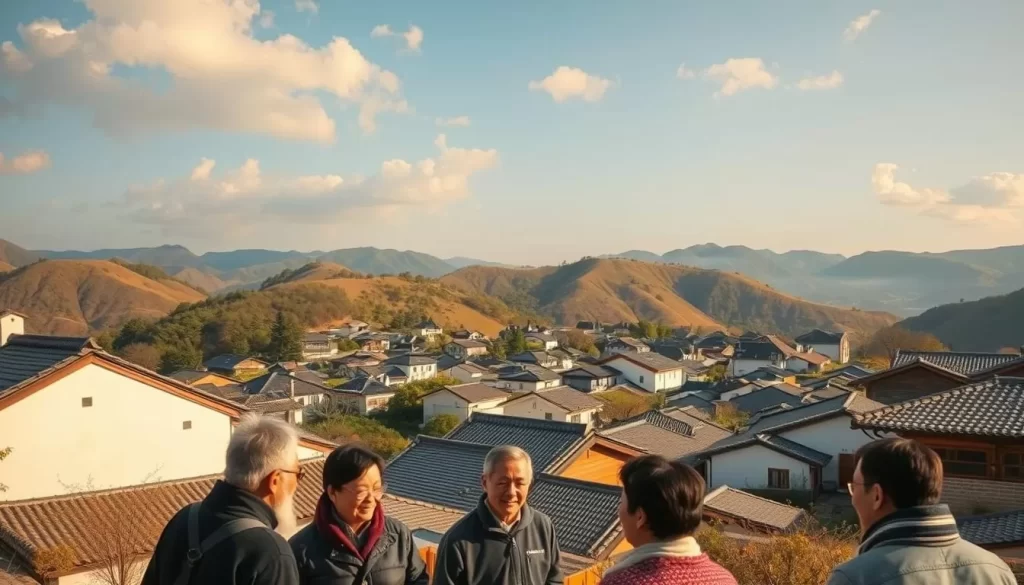
Vocabulary Differences
The dialect features unique regional terms and expressions that reflect local culture and lifestyle. While the core vocabulary is similar to Standard Korean, the Chungcheong dialect includes word choices and phrases that are distinct. For example, “하세요” (please do) is often pronounced as “하슈” in the Chungcheong dialect, showcasing its characteristic features.
Grammar and Sentence Structure
Grammar and sentence structure in the Chungcheong dialect show subtle variations from Standard Korean, particularly in verb conjugations and sentence endings. The dialect exhibits vowel swaps, such as changing ㅛ to ㅠ, and unique verb endings that differentiate it from the standard language. For example, “맞아요” (That’s correct) becomes “맞어유,” and “뭐야?” (What’s that?) becomes “뭐여?” These variations contribute to the dialect’s distinct identity.
Cultural Significance of the Chungcheong Dialect
As you explore the cultural landscape of North Chungcheong Province, the significance of the Chungcheong dialect becomes increasingly apparent. The dialect is not just a means of communication; it is a reflection of the region’s culture and people.
Regional Identity and Pride
The Chungcheong dialect serves as a powerful marker of regional identity and cultural pride for people from North Chungcheong Province. Its distinctive intonation and relaxed cadence reflect the cultural values of the region, including modesty, friendliness, and a less hurried approach to life. Local residents often maintain their dialect as a conscious expression of regional heritage, even when they’re proficient in Standard Korean.
Representation in Media and Entertainment
The Chungcheong dialect has gained representation in Korean media and entertainment, where it’s often used to portray characters with friendly, easygoing personalities. This representation not only highlights the influence of the dialect on the region’s culture but also contributes to its preservation. By understanding the cultural significance of this dialect, you gain insight into how language varieties influence and reflect regional identity throughout South Korea.
| Aspect | Description | Impact |
|---|---|---|
| Regional Identity | The dialect reflects the region’s history and cultural values. | Strengthens regional pride among locals. |
| Media Representation | The dialect is used in media to portray friendly characters. | Contributes to the dialect’s preservation and popularity. |
| Cultural Significance | The dialect is a vital part of the region’s cultural fabric. | Provides insight into the region’s values and traditions. |
Comparison with Other Korean Dialects
You can gain a deeper understanding of the Korean language by comparing the Chungcheong dialect with other dialects spoken across the peninsula. This comparison highlights the unique characteristics of each dialect and their regional significance.
Similarities with Standard Korean
The Chungcheong dialect is considered one of the closest regional dialects to Standard Korean (Pyojuneo). This is due to its minimal deviation in pronunciation and vocabulary from the standard language. As a result, speakers of Standard Korean can easily understand the Chungcheong dialect.
Differences from Gyeongsang and Jeolla Dialects
In contrast, the Gyeongsang dialect is known for its “strong” or “manly” quality, characterized by brisk and sometimes abrupt intonation. On the other hand, the Jeolla dialect is recognized for its melodic intonation patterns, creating a unique rhythm that is slower than the Seoul dialect but faster than the Chungcheong dialect. These differences highlight the diverse linguistic landscape of Korea.
Relationship with Other Dialects
The Chungcheong dialect also shares some similarities with the Gangwon dialect, although the latter sounds slightly slower and drawn out. A comparative analysis of these dialects is presented in the following table:
| Dialect | Intonation | Speed |
|---|---|---|
| Chungcheong | Relaxed | Moderate |
| Gyeongsang | Brisk, abrupt | Fast |
| Jeolla | Melodic | Slower than Seoul, faster than Chungcheong |
| Gangwon | Slightly “bouncier” | Slightly slower |
Language Preservation and Education in North Chungcheong
You will discover how North Chungcheong Province navigates the preservation of its unique dialect amidst the prevalence of Standard Korean in education. The province’s approach to language education is multifaceted, focusing on both the local linguistic heritage and the national language standards.
Educational Policies and Standard Korean
North Chungcheong’s educational policies prioritize Standard Korean in formal education, ensuring students can communicate effectively across the country. Schools follow the national curriculum, which emphasizes vocabulary and grammar, preparing students for a unified language environment. This approach helps maintain a balance between regional identity and national cohesion.
Efforts to Preserve the Local Dialect
Efforts to preserve the Chungcheong dialect include cultural programs, dialect documentation projects, and community initiatives. These programs celebrate the region’s linguistic heritage and teach the dialect in local schools. Unlike some endangered dialects, such as Jeju, the Chungcheong dialect remains relatively vital, though it faces challenges from standardization and media influence. Understanding these preservation efforts highlights the balance between maintaining linguistic heritage and ensuring effective communication in contemporary Korean society with the right words.
Conclusion
Your exploration of North Chungcheong Province’s languages has uncovered the dynamic interplay between standardized and regional dialects. You’ve gained comprehensive insight into the official and widely spoken languages, understanding both the use of Standard Korean and the distinctive regional Chungcheong dialect.
The linguistic situation in this South Korean province reflects broader patterns across the Korean Peninsula, where standardized language and regional dialects coexist. While North Korea and South Korea have developed some linguistic differences, the fundamental language structure remains shared, with regional dialects like Chungcheong maintaining their distinctive characteristics.
Understanding these language patterns, including the Korean Language and its dialects, provides valuable insight for anyone interested in South Korea‘s culture or planning to visit this fascinating region.
The above is subject to change.
Check back often to TRAVEL.COM for the latest travel tips and deals.

